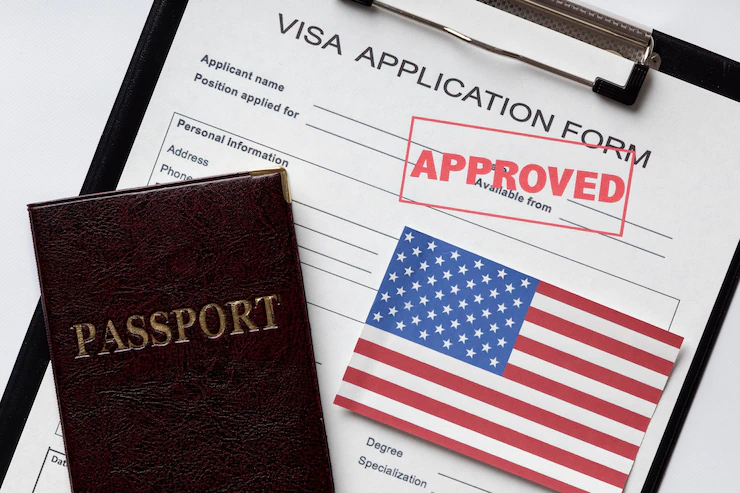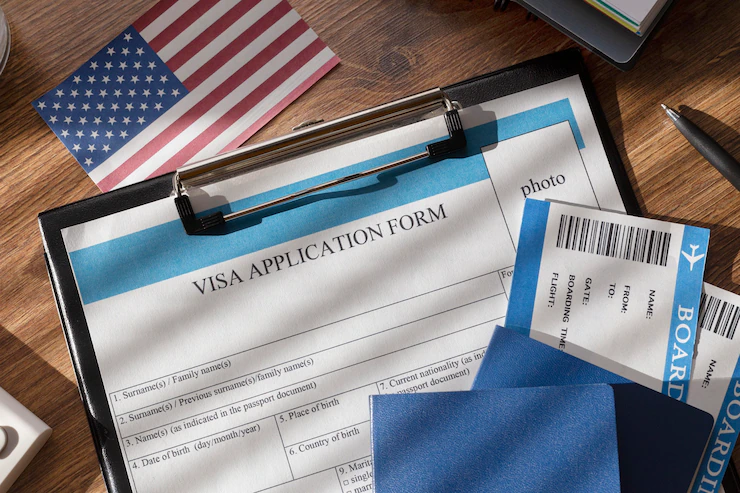US Accuses Bob Menendez Of Accepting Bribes For Supporting Qatar And Egypt
US Senator Bob Menendez faces new and updated charges. These hold that he received bribes to help Qatar out while....
By LawyersNote
03 Jan 20241540 Views

Whether you are planning on immigrating to the United States or your family member has applied for a visa, you need to understand the process. You need to know how the process works, what you can expect, and what to do in case things do not go your way.
Immigrants looking to move to the United States must first apply for the Immigrant Visa Process, or green card. Visas are limited by country and preference category, and it can take several years to process a visa application. The Visa Bulletin website provides information on the availability of visas in various categories.
Visas are issued in order of priority date. This means that the earlier you apply, the better your chances of getting a visa. It’s important to keep track of your Priority Date, as it will be on your immigration paperwork and it is the key to charting your position on the visa waiting list.
Before applying for an immigrant visa, it’s a good idea to check out the Visa Bulletin, which lists priority dates by home country, category, and preference. By tracking your own Priority Date, you’ll be able to see where you stand in the queue, and whether your country of origin is one of the countries with a high demand for green cards.
While it’s not necessarily the most efficient way to go about the visa application process, the Visa Bulletin is still a useful resource. It is the one place where you can find information on all the important dates. You’ll also be able to see what types of visas are available, and how long they may take to process.
In addition, the Visa Bulletin includes a list of the most important things to know, such as the most important immigrant visas and the most important consular processing dates. Some immigrants may be entitled to local interviews, and others must attend international interviews in their home countries.
Although it’s not as well known as the Priority Date, the Visa Bulletin’s most important feature is the ability to find out when you can expect to receive a visa. If you’re concerned about your chances of receiving a green card, the monthly Visa Bulletin is a great way to get an idea of your status in the line. Fortunately, the US Department of State releases this information each month.
There are other useful features of the Visa Bulletin, such as information on the most important filing dates, the most important consular processing dates, and the most important visa categories. For more information, visit the Department of State’s official website, and be sure to subscribe to the newsletter.

The immigration visa process involves several fees. Applicants must account for the cost of travel, medical exams, and mailing fees. A qualified immigration lawyer can help you identify the hidden costs in the process.
Visa processing fees are set by the U.S. Department of Homeland Security. These costs vary by nationality, country of origin, and visa category. There are also additional costs for J-Waiver requests.
In September 2014, some nonimmigrant visa application fees changed. These include the H-1B visa fee and the E-3 visa fee. Generally, applicants must pay each of these fees once.
US Citizenship and Immigration Services (USCIS) accepts credit cards, cashier’s checks, money orders, personal checks, and bank drafts. It is recommended that you check with the USCIS website for the fee requirements for your particular citizenship or nationality.
The Department of State also reviews consular fees periodically. They use a 10-year average for demand to limit the volatility of unit costs. This allows for a more accurate estimate of the cost.
The CEAC website is another source for visa fees. This online platform eliminates manual entry and collects more accurate data. Moreover, you can pay both the SEVIS and NVC fees at once.
Applicants may also need to pay a fee for a biometrics appointment. Depending on the immigration visa type, the costs can range from $80 to $200.
In some cases, you may have to pay an Affidavit of Support (AOS) fee. Most AOS fees go to the person who filed the immigrant petition. However, it is possible to ask the visa beneficiary to pay the AOS fee. If the visa beneficiary does not have the ability to pay, the AOS will be rejected.
USCIS will not expedite the processing of applications with other agencies. As a result, there is no guarantee that you will receive a decision within 15 days. You can take advantage of the Premium Processing Service to ensure that your petition will be processed within 15 days. This service is more expensive than the previous system.
It is important that you understand the costs involved in the visa process before moving to the United States. Getting a green card can help you build a better life in the U.S.
Family members willing to live in the U.S. can take advantage of the immigration visa process by consulting a family immigration lawyer. The process requires a lot of attention to detail, though. In addition to meeting the general eligibility requirements, family members also have to prove they are not prohibited from getting status.
Family preference visas allow family members to immigrate to the U.S. in unlimited numbers. But there are limits to the number of visas available, particularly for children over 21 years of age. These children may have to wait for a long time for a green card.
For this type of visa, family members can include unmarried children under 21. These children must be financially dependent on their parents at the time of application. They also must attend an interview with a U.S. consular officer. A medical exam is also required.
Family preference visas are divided into two subcategories. First, subcategory 2A is for spouses of green card holders. Second, there is subcategory 2B for unmarried children of green card holders. Both types of families are subject to a waiting period.
Family members are not required to be law enforcement certified. However, if they are traveling to the United States with their children, they will need to get travel documents from the United States Citizenship and Immigration Services.
If a family member has a permanent residence permit, they must also meet a maintenance requirement. This requires the family member to have enough income to support themselves and their children.
Family members who are working in the EU can apply for a work permit. However, their employer must first approve their employment. Once the approval is obtained, they must also undergo a security check and a background check.
To qualify for a green card, the applicant must have a qualifying relationship with one of the five categories listed above. Depending on their personal situation, the processing time will vary.
Although there is no set age limit for an individual to become a family member, children who are divorced are considered to be unmarried. Children under age 21 who are married to permanent residents are considered to be F2 immigrants.

Nonimmigrant visas are issued to foreign nationals who are temporarily visiting or working in the United States. The different types of nonimmigrant visas vary in the purpose of their issuance, the duration of their validity, and the requirements for application.
In addition, the type of nonimmigrant visa varies depending on the applicant’s country of origin, his/her occupation, and the nature of the intended stay. Most nonimmigrant visas may be extended multiple times. Depending on the purpose of the travel, the visa can be used for tourism, business, study, or temporary work.
In order to apply for a nonimmigrant visa, you must be able to demonstrate that you have strong ties to your home country. You must also prove that you have the intent to return to your home country after your temporary stay in the United States. Some of the most common nonimmigrant visas include M-1, C-1, D-, B-1/B-2, F-1, J-1, H-1, O-1, P-1, Q, and U-1/U-2.
To apply for a nonimmigrant visa, the applicant must submit an application for a DS-160, which is an online form. A consular officer reviews the application and decides if the applicant is eligible to receive a visa.
Applicants are required to have a valid passport and a current photo. They must complete the DS-160 form, pay the applicable fee, and schedule an interview with the US Embassy. This is not a guarantee that a visa will be issued. It is also possible to be denied, in which case you will need to return to your home country.
If you are seeking to obtain a nonimmigrant visa to study in the U.S., you must provide educational documents. Students can also be issued a J-2 or F-2 visa for their dependents. These dependents can include spouses, children under the age of 21, and unmarried children over the age of 21.
For business purposes, applicants can be issued a nonimmigrant business visa. Business nonimmigrant visas are typically granted to people who are transferring within a multinational company, or who are transferring to a new office in the U.S.
Read Also:

US Senator Bob Menendez faces new and updated charges. These hold that he received bribes to help Qatar out while....
By LawyersNote
03 Jan 2024
In a stunning turn of events, former New York City Mayor Rudy Giuliani has filed for bankruptcy after being hit....
By LawyersNote
22 Dec 2023
In a startling turn of events, a judge in a civil fraud trial involving former President Donald Trump has declared....
By LawyersNote
19 Dec 2023